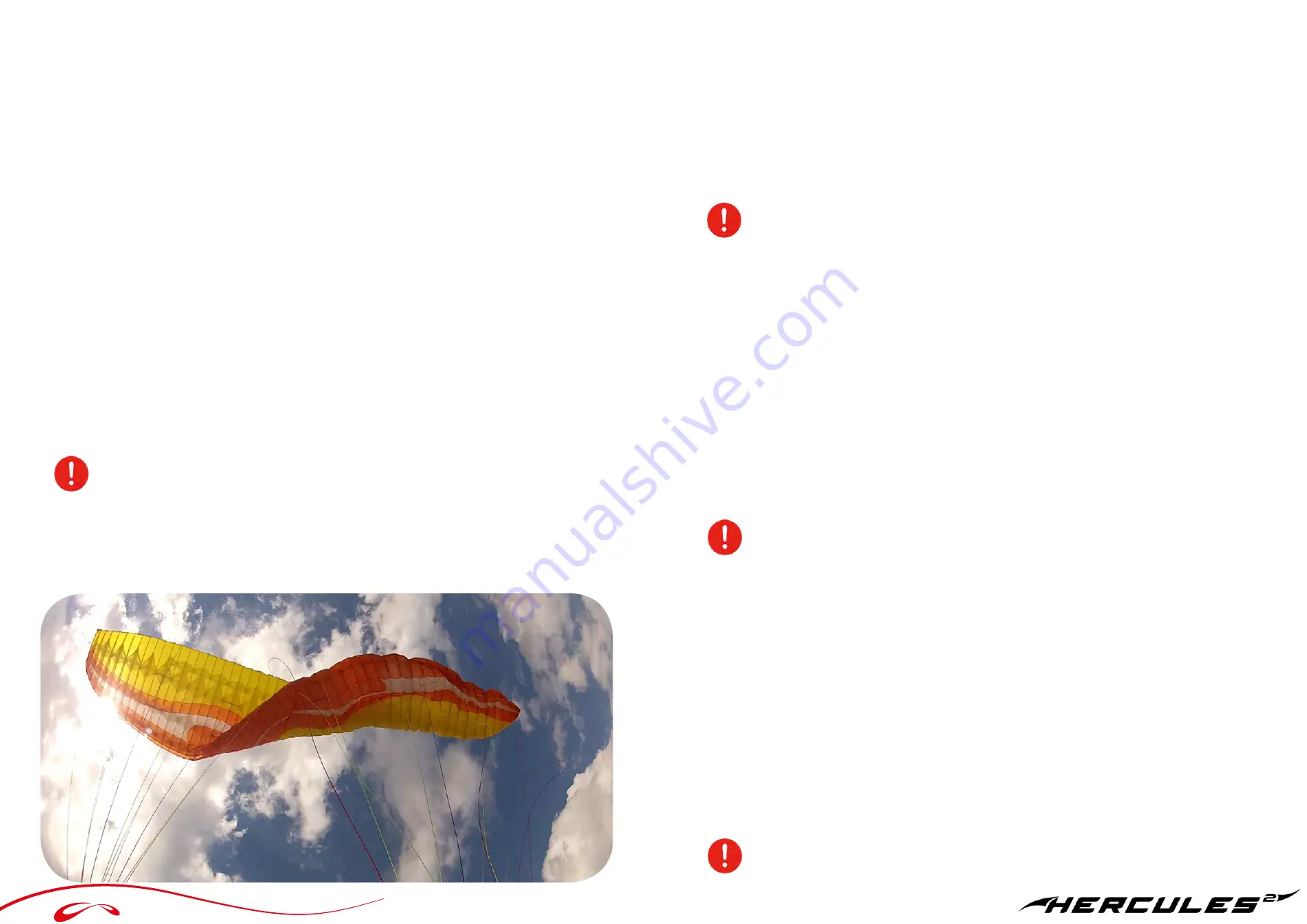
28
29
Active flying almost ever avoids lateral closing. If lateral closing happens, the canopy
folds predictable and progressively from the tip to the center. This corresponds a collapse
of 50% or more and results in a slight tendency for a turn. The paratrike wing can be held
on course using the brake on the open side.
Normally the paratrike wing opens on his own. If the collapse happens during accelerated
flight the canopy has a more dynamic reaction, but even than the turn can be controlled
without problems.
To facilitate the closed side to fill the pilot has to pull down slowly (ca. 2 seconds) the
brake on the closed side and let go again (pump). Shifting the weight to the open side
helps to re-inflate the sail and increases security, cause the brake has to be used less
and this avoids a full-stall.
Without action, the paratrike wing will begin a positive spiral. The pilot must lightly apply
the brake on the external side to stop a spiral and at the same time shift his weight on
the same side until the canopy is stabilized. Exactly at this stage of pendulum effect
under the canopy, it is important that the pilot controls carefully the amount of force
applied on the brakes, and often it is needed to decrease the force. Once a straight flight
is achieved, the closed side can be re-inflated by the pumping action.
Lateral closing
In all extreme collapses remember: switch off the engine or with motor idling
and don´t apply power.
Parachutal
If the paratrike wing is wet or the regular inspections weren’t made, the risk of
a parachutal flight exists.
In all extreme collapses remember: switch off the engine or with motor idling
and don´t apply power.
This paratrike wing does not have parachutal flight tendencies and recovers on its
own from an intentional parachutal flight induced by braking commands. In case of a
parachutal flight after an extreme situation loose the brakes and use the accelerator.
Before using the brakes again make sure that the glider flies normally.
Full-stall
The Hercules 2 has a long way on the brakes before he enters a full-stall. A full-stall
happens if the brakes are pulled symmetrically and excessively downwards. Normally
the paratrike wing starts to fly backwards and deforms to a horseshoe, the opening on
the front.
Before terminating the canopy must be stabilized. Afterwards both brake lines have to
be loosened symmetrically and slowly, to avoid that the canopy kicks forward.
In all extreme collapses remember: switch off the engine or with motor idling
and don´t apply power.
Negative spiral
The Hercules 2 has a long way on the brakes and difficulties to enter in a negative spiral.
But if one of the brakes is extremely pulled downwards it can happen.
The side with the brake pulled down enters in a stall, while the other side maintains
open. In this case the brake must be loosened at once, before the paratrike wing turns
180º, in order to get the paratrike wing back to normal flight. Depending on the situation
in which the brake is loosened, the canopy can react quite dynamic and kick forward
provoking a collapse.
In all extreme collapses remember: switch off the engine or with motor idling
and don´t apply power.
Содержание Hercules 2 240
Страница 1: ...Manual DGAC Version 1 3 2021 ...















































